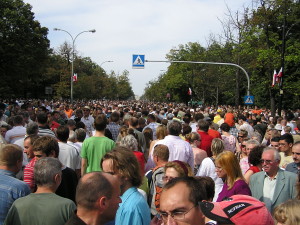Many of us know that the population of seniors in California is growing, and that it will continue to expand over the next couple of decades. According to statistics from the Administration on Aging (AoA), Americans aged 65 and older made up a little over 14% of the population in 2013 (or around 44.7 million people). That number is expected to grow to nearly 22% of the population by the year 2040, and it will more than double—to around 98 million people—by the year 2060. What do these numbers mean for the current population of residents in California’s nursing homes and assisted-living facilities? According to a recent article in The Sacramento Bee, “the number of under-65 nursing home residents has surged 40% in a decade,” and it may be producing a “dangerous mix” at facilities.
When nursing homes serve clients in very different age groups, what problems can arise? Do these issues rise to the level of nursing home abuse or neglect?
Frail Elderly Residents No Longer Have ‘Safe Havens’
One of the biggest issues facing mixed-age nursing homes is that many frail elderly residents may not be safe at certain facilities. Let us explain a bit more by looking at the details of the article.
Many of California’s nursing homes have begun serving persons between the ages of 50 and 65 years old who require care due to mental illness. At the same time, even residents who are younger—relatively speaking—may be dealing with drug or alcohol problems. As the article emphasizes, facilities often rely upon the Medicare and Medi-Cal benefits that residents have, and sometimes this can mean that nursing homes turn into “long-term housing at government expense.” In short, elderly residents who are in upper age groups and are frail may be at risk of injury from other patients, or they may be at risk of nursing home neglect as staff seek to attend to issues involving younger residents.
According to Tippy Irwin, the executive director of ombudsman services in San Mateo County, “the homes that we have known as havens for the frail elderly . . . are no longer safe havens.” As she explains, there is now a “dangerous mix” of persons in many nursing homes in our state, including “old, young, mentally ill, convicted felons, street people in desperate need of care, and younger clients with chronic illnesses, brain injuries, and drug abuse problems.”
Shifting Demographic of Nursing Facilities
As the article notes, the demographics of nursing homes in our state have been shifting over the last couple of decades:
- Between 1994 and 2014, the “under 65” population grew by about 40%, while the “over 65” group dropped by 11%.
- In 2016, one out of every five nursing home residents is under the age of 65.
- From 2000 to 2014, the number of residents who suffer from schizophrenia and bipolar disorder in nursing homes rose by about 60%, meaning that one out of every seven residents at a California facility has one of these conditions.
Due to the shifting demographics, the quality of care has diminished. The data analyzed by The Sacramento Bee shows that “nursing homes with a relatively high proportion of younger patients tend to have more health deficiencies per bed and lower patient-staffing ratios than homes at the other end of the spectrum with few young patients.”
If you have concerns about your elderly loved one’s safety or care in a nursing home, an experienced San Diego nursing home abuse lawyer can assist you. Contact the Walton Law Firm for more information.
See Related Blog Posts:
 Southern California Nursing Home Abuse Lawyer Blog
Southern California Nursing Home Abuse Lawyer Blog









